In recent years Barcelona has become a veritable String Capital, not the most important in Europe, of course, but of growing significance in terms of the number of highly prestigious string puppeteers who live in the city, as well as of young professionals who are starting out in this branch of puppetry. This is apparent in international festivals of the genre, which increasingly feature artists from Barcelona [1].

Harry V. Tozer and his skeleton marionette.
We have to go back to the beginning of the eighteenth century to find the first home-grown Barcelona string puppeteers, such as the members of the historic Roca family who worked in various performance genres, such as ventriloquy, stage magic and marionettes. Also, in 1921, the first performance took place of the show ‘El Cavall Volador’ (The Flying Horse) at Barcelona’s Sala Reig (See the article by Adolfo Ayuso “Aureli Capmany at the Sala Reig in Barcelona” en the magazine Fantoche, 6, 2012, pp. 80-93) This show featured string marionettes and was directed by Aureli Capmany; the script was by Francesc Pujols, scenery and puppets by Emili Ferrer, music by J.M. Torrents and costumes by Josefa Pradell de Rousse.

It must be said that it was habitual in families of Catalan hand puppeteers to work string marionettes from time to time, something we find throughout the Iberian Peninsula, as can be seen at the Museo da Marioneta de Lisboa (see here) with the companies of Faustino Duarte, Joaquín Pinto, Henrique Duarte and Manuel Rosado, in which, apart from the popular Robertos (name given to hand puppets in Portugal), also made use of string puppets from time to time.

Mr. Harry V. Tozer and his ‘alter ego’. Photo by Jesús Atienza.
Nevertheless, it was with the arrival of Harry V. Tozer in Barcelona in 1925 that the Barcelona school of marionettes truly began. Harry V. Tozer became, over the years, a true master of string puppetry; from his art, several branches of work emerged. In parallel with Tozer, though with crossing paths, we must situate Herta Frankel, who arrived in Barcelona in 1942 and first performed as a marionettist in 1948 with extraordinary success; this first puppet show was Grandes Artistas de Pequeño Tamaño in the review Sueños de Viena, at theTeatro Español de Barcelona. Berta Frankel invited Tozer to make her first marionettes, a request which the British master puppeteer declined (their styles were very different), in contrast to his assistant Luis Fontanet. Berta Frankel worked with puppets by the most important European puppet makers of the time: Lluís Fontanet, Regino Mas, Harro Siegel, Fritz Herbert Bross, Irmgard Sturm, Elvira Loyzaga, Germans Nieto, Zdenek Podhursky, Georges Lafaye and Josef Vitek.

Herta Frankel in mid-performance.
Tozer (see here) created his own company, though he never conceived it as professional, with which he performed at the Cúpula del Coliseum in Barcelona, and he also moved into a series of spaces made available by the French Lycée school. In the middle of the 1950s, the mayor of the city José María Porcioles promised Tozer a permanent theatre, which was his dream, in the Pueblo Español (Spanish Village) in Barcelona, to where he immediately moved all his puppets. A dream which ended in deception (the City Council dedicated the space to another activity) which caused a serious depression in the English master; his marionettes, meanwhile, abandoned in the damp workshops of the Poble Español were affected by mould. It wasn’t until 1973 that Hermann Bonín, the then director of Barcelona’s Theatre Institute (Institut del Teatre, in Catalan), together with puppeteer Joan Baixas, invited Tozer to open a marionette workshop at the Theatre Institute itself; there, he would be able to restore the material that had been rescued from the Pueblo Español and, at the same time, teach his craft to new puppeteers..

Oriol Pont, Teresa Travieso and Carles Cañellas, with some of Mr. Tozer’s puppets. Photo by Jesús Atienza.
Hermann Bonín’s time at the Theatre Institute was a foundational periodin which, together with Joan Baixas and Xavier Fàbregas, and later with Josep Muntanyès, the Escola de Titelles (Puppet School) was also created: the teachers were Joan-Andreu Vallvé, Josep Maria Carbonell, Joan Baixas and, soon after, Alfred Casas. These were golden years for the art of puppetry in Barcelona with the annual Puppet Festival, too, created by the Theatre Institute. Two important exhibitions were held at Palau Güell in Conde del Asalto street (today Nou de la Rambla), which at the time was the headquarters of the Museu del Teatre (Theatre Museum): one of Catalan Puppets (the Anglès and Didó collections) and one of Harry V. Tozer’s marionettes.

The Grupo-Taller de Marionetas de Barcelona, with Pepe Otal at the back, and members of the company in the 1970s, with Paco Porras, his wife Tina, Luis Fellini, Teo Escarpa, Joëlle Nogués and Georgina Castro, among others. Photo by Jesús Atienza.
As is logical, many people signed up for Tozer’s workshop and the School of Puppets, young apprentices of puppetry who, over the years, became important professionals. Among others was Pepe Otal, a string puppeteer recently arrived in Barcelona from Albacete and who was studying Stage Direction at the Theatre Institute. Pepe was deeply impressed by Tozer’s marionettes on seeing them for the first time, in the above-mentioned exhibition at the Palau Güell. He decided to change his area of specialised study and signed up with the English master puppeteer. Later, Otal’s iconoclastic vision of theatre led him to abandon the Institute and create his own company, the Grupo-Taller de Marionetas de Barcelona, a historic group inspired by anarchist ideals and which rapidly turned into a second string puppet school, in parallel to that of Tozer. Names such as Carles Cañellas, Jordi Bertran, Luís Fellini, Joëlle Nogués, Georgina Castro, Damiano Privitera, Teo Escarpa, and Lope de Albert, to name only a few of those from the early period, emerged from the Taller de Pepe Otal.

Some of the current members of the Casa-Taller de Marionetes de Pepe Otal.
To return to Harry V. Tozer’s classes, we find a number of people who would prove to be key figures in subsequent periods of marionette work in Barcelona, among others: Teresa Travieso (who rapidly became assistant to Tozer), Fernando Gómez, Núria Mestres, Toni Zafra, Santi Arnal, Esther Cabacés, Manel Tirado, Eduardo Rodríguez ‘Tatan’ (founder of the company Tanxarina in Galicia), and Karin Schafer (who began her professional life with Santi Arnal before moving to Vienna where she developed a successful career).

Carles Cañellas, in the 1970’s, with Jordi Bertran on the guitar. Photo by Jesús Atienza.
Since the end of the seventies, these two marionette schools, of Harry V. Tozer and Pepe Otal, have unceasingly generated new puppeteers, many of them specialising in strings.
At the same time, other companies joined the wave of Catalan string puppetry, as was the case of La Fanfarra, arriving in Barcelona in 1976. Mariona Masgrau (see here), who had begun working as a self-taught string puppeteer in Denmark and Portugal, created the company La Fanfarra together with Eugenio Navarro and Toni Rumbau. The company’s inaugural shows were marionette plays, at first using a bridge and then working in the street. A company that explored marionette work until the late nineties.

Marionettes by Mariona Masgrau (La Història de Li, 1980). TOPIC Museum in Tolosa.
Unfortunately, Tozer’s Studio closed when the master retired and the Institut del Teatre became an Escuela Superior with university status, eliminating puppetry as a speciality and reducing it to a simple ‘subject’. This was a costly error and one which the Institut is now trying to rectify at its department of Visual and Objet Theatre, directed by Alfred Casas.
But the mark left by Tozer, Otal, Masgrau, Frankel and the early marionettists is too strong to disappear. On the death of Herta Frankel, the company continued under the guidance of the trusted puppeteers who had worked with the great Austrian puppeteer: Fernando Gómez and Pilar Gálvez, who created the Marionetàrium Herta Frankel company installed in theTibidabo. Immediately, a veritable school of puppeteers grew up around the company which, over the years, has produced important names such as Oriol Pont, Carles Codina ‘Litus’, Óscar Gallart, Valentina Raposo, Glòria Arrufat, Josep Milan, Helena de Sola, Paulette San Martín and Miren Larrea, among others.

Marionettes by Herta Frankel. Marionetarium, Tibidabo.
The String School of Barcelona.
Having looked at the background, the current situation is surprising for both insiders and outsiders when confronted by the extraordinary presence of puppeteers in Barcelona dedicated to string puppetry. Besides the Institut del Teatre (with a training we should consider as a broad spectrum), the following are schools specifically devoted to string work: the Casa-Taller de Marionetes de Pepe Otal which, since the death of the recognised marionettist from Albacete, has continued with its function as an open studio and a string school, with important figures such as Paula López, Ángel Navarro, Carlos López, Carles Codina ‘Litus’, Pere Bigas, Lope de Alberdi, Antiqchas (Marieta Rojo y Laura Galli), among many others.
.

Marionetteby Lope de Alberdi. Photo by Jesús Atienza.
Jordi Bertran, who began his career with Carles Cañellas and Pepe Otal, after becoming, over the years, one of the most important master puppeteers from the Barcelona School, also opened his Taller del Parque (Studio in the Park), attended by puppeteers from all over the world to learn the craft of strings as well as the art of manipulation.

Pupilsof Jordi Bertran during a workshop.
The earlier mentioned Marionetarium Herta Frankel at the Tibidabo continues to offer courses, introducing new marionettists to their work, many of whom learn practically while participating in the company’s performances at the Tibidabo Funfair site.
Carles Cañellas (see here) respected veteran string puppeteer in Catalonia, creator of the company Rocamora Teatre; together with dancer and puppeteer Susanna Rodríguez, he has recently opened an important marionette centre in the small town of Calders, in the Moianès province of Barcelona, where they intend to run courses and artists residencies. (see here)

Process of construction of a marionette of the figure of the Catalan poet Joan Maragall. By Núria Mestres.
A long-term resident in Barcelona for many years is the puppeteer Daniel Loeza from Mexico, well known for his spectacular piano-playing frog that was a regular presence on the Ramblas. The sophisticated technique fascinated many people, arousing on occasions the vocation and interest for string puppeteering, as occurred with the Portuguese master puppeteer Manuel Costa Dias, who, after seeing Loez on the Ramblas, decided to construct his own super-marionette in the figure of his ‘Orchestra Conductor’ (see here)


Daniel Loeza in the Ramblas. On the right, Manuel Costa Dias with his marionette.
Photographs by Manuel Costa Dias.
Below, we name current master puppeteers who can be considered as veterans of the Barcelona School and whose work is mainly – though not exclusively – dedicated to string puppetry:
– Jordi Bertran, (see here), director of the Jordi Bertran company, one of the most internationally renowned Catalan groups, offering solo, duo and group shows.

Marionette by Jordi Bertran, Bufaplanetes.
– Carles Cañellas, (see here), director of Rocamora Teatre, and Susanna Rodríguez, members of the veteran company Rocamora Teatre which has worked in different styles, earning great international recognition.

Marionette by Carles Cañellas, from the show Identidades, choreographed by Susanna Rodríguez.
– Fernando Gómez, (see here), artistic director of the company Marionetarium Herta Frankel, located in theTibidabo amusement park. He is also responsible for the restoration of Herta Frankel’s historical marionettes.

Fernando Gómez con una de sus marionetas. Foto de Jesús Atienza.
– Toni Zafra, (see here), marionettist with a very successful solo career who performs throughout Europe. A follower of Harry V. Tozer.

Marionettes by Toni Zafra.
– Santi Arnal, (see here) artistic director of the company Per Poc. In spite of the fact that his shows are basically musical works for orchestra, Santi Arnal continues to perform his solo string puppet show. He was a pupil of Harry V. Tozer..

Santi Arnal with one of his marionettes.
– Manel Tirado, from the company Ninus Teatre (se here), installed in the town of Moià, in the Moianès province of Barcelona. He was a pupil of Harry V. Tozer.

Manel Tirado, with one of his marionettes.
– Núria Mestres (see here), highly reputed puppeteer and constructor of marionettes, with a long career in string puppetry. She was a pupil of Harry V. Tozer.

Rinaldo and the Elegant Dimoni, marionettes by Núria Mestres for the show Zespion, by Eugenio Navarro
– Eugenio Navarro, from La Puntual (see here), creator of La Puntual theatre, solo puppeteer who maintains a presence of marionettes in some of his shows, continuing the line of La Fanfarra.

Eugenio Navarro and Malic. Plaça del Pi, 1979. Photo by Ramon Ballester.
A strong new generation of professionals is following them, having learned with one of more of the older puppeteers, walking the world stages with firm steps:
– Ángel Navarro, marionettist who usually works as a solo performer, considered as one of the virtuoso string puppeteers of the new generation, author of the show ‘El Gabinete Onírico’ (see here)

Marionette by Ángel Navarro.
– the company Anita Maravillas with the excellent marionettist Valentina Raposo, who trained in the Marionetàrium and in the Taller Pepe Otal, and the puppeteer and excellent actress Miren Larrea (see here)

Marionettes by Valentina Raposo. Exposición Figures del Desdoblament.
– Jordi Regot, who began working with string puppets after seeing a show by Jordi Bertran. He founded the company Trac-Trac and the Festival de Titelles de Sant Llorenç Savall together with Àngels Valero. Regot currently makes lengthy visits to Chile. (see here)

Marionette by Jordi Regot.
– the company S.O.S. Titelles, made up Carlos López, student of Pepe Otal, and Cristina Robledillo, who began in the Taller de Marionetes de Pepe Otal, (see here)

The complete S.O.S Titelles company before leaving for America. Photo by Jesús Atienza.
– Paula López, student of Pepe Otal and active member at the present time of Taller de Marionetes de Pepe Otal. She performed on many occasions with the Circo de Pepe Otal (Pepe Otal Circus) (see here)
– Carles Codina ‘Litus’, who began in the Marionetàrium and with Pepe Otal. He currently works at the Marionetàrium in the Tibidabo and occasionally collaborates with Jordi Bertran’s company. He is also a member of the collective of the Taller de Marionetes de Pepe Otal.

Pere Bigas and Carles Codina ‘Litus’ with his string puppet Adolf.
– Oriol Pont, who began in the Marionetàrium and has become one of the finest constructors of his generation. He currently works at the Marionetàrium.

Oriol Pont, in the Marionetàrium workshop.
– The company ZIPIT Teatre, composed by Glòria Arrufat, who began working with strings at the Marionetàrium, and by Paulette San Martín, who began in the Taller del Parc with Jordi Bertran and also at the Marionetàrium (see here)

Image of ‘Jai, el mariner’, by Zipit Teatre..
– Mina Trapp, multifaceted artist, musician, puppeteer and film maker, who learned the craft of puppetry with Pep Gómez and Pepe Otal (see here)

Puppets from the film ‘A Cero’, by Mina Trapp.
– Michela Aiello, who began in the Taller de Marionetas de Pepe Otal, author of one-person shows of great character (see here)

Marionette by Michela Aiello. Photo by Jesús Atienza.
– Ferran Costa, of the company Rambling Puppets, who began in the Taller de Marionetes de Pepe Otal, creator of a marionette, Canelo the dog, that has toured throughout Europe with extraordinary success (see here).

Canelo the dog, by Ferran Costa. Photo by Jesús Atienza.
– Marionetes Nòmades with the marionettists Pere Bigas and Bruno Valls, students of various master puppeteers (Pere Bigas of Toni Zafra and Stephen Motram, among others, while Bruno Valls learned from Bigas and in the Taller del Pepe Otal). Both are active members of the Taller de Marionetes de Pepe Otal (see here)

‘Marionetes Nòmades’, Africa tour.
– the company Las Antiqchas with Marieta Rojo and Laura Galli, who began in the Taller de Marionetes de Pepe Otal. The were part of SOS Titelles in its expedition to America. They currently work with various outdoor shows almost all of hem with string marionettes (see here)

Las Antiqchas in performance.
– Compañía Ele, comprising Raquel Batet and Marta Lorente, Raquel began with the company Marionetes Nòmades and Marta directly with Pepe Otal, (see here)

Compañía Ele performing in a square in San Sebastian.
– Fills de Fusta, with Vicente Martínez Andreu and Laura Cortés, who began in the Taller de Marionetes de Pepe Otal. They were awarded the Prize for the Best Company of Street Performers at the International Festival San Sebastián (May-June 2016)

Vicente Martínez Andreu and Laura Cortés, Fills de Fusta company
– the company Les Moires, with Oto and Rocío, who began in the Taller de Marionetes de Pepe Otal
– Julieta Miranda, who began in the Taller de Marionetes de Pepe Otal, actress and writer as well as stringpuppeteer.

Marioneta by Julieta Miranda. Photo by Jesús Atienza.
We should also point out that the excellent marionettist Alexander Jorgensen, famous for his character Barti, residesat the moment in Mataró, very close to Barcelona.

Barti, by Alexander Jorgensen. Photo by Jesús Atienza.
As we can see, Barcelona has become a city of reference in terms of String Puppetry, a difficult and sophisticated technique which appears to be very at home here. A phenomenon that we hope will be consolidated and that we hope will receive the attention of relevant institutions that it deserves so that the schools and workshops already in existence can undertake their work with sufficient guarantees and a vision for the future.
Article written in collaboration with UNIMA Catalonia.
[1] In this article, the word ‘marionette’ is always used in the sense of ‘string puppet or string marionette’, even though in other contexts it may be employed as a generic term in relation to the world of puppets.

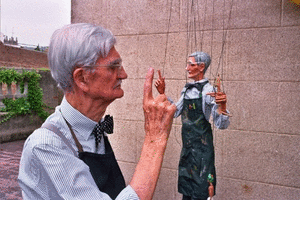
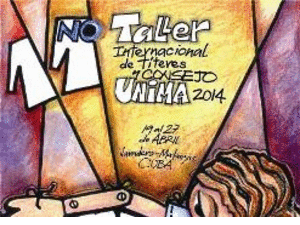
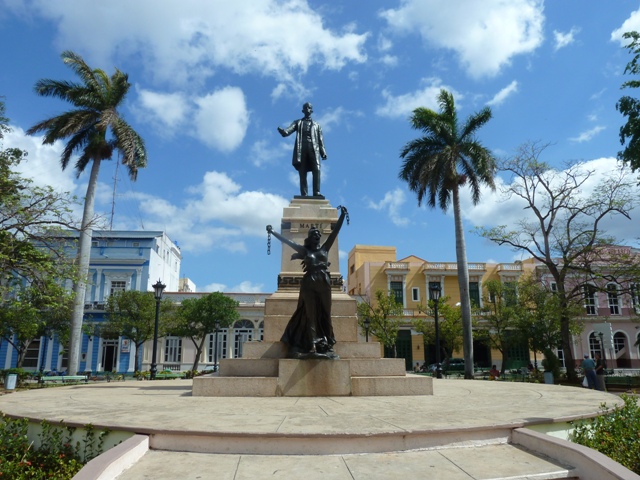
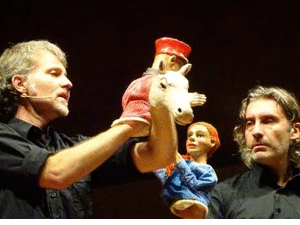
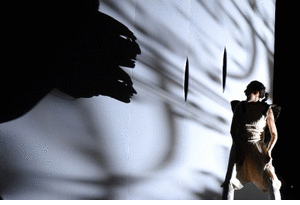








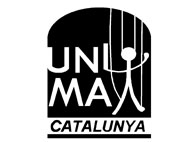







Hello my name is Trevor and I’m from Ontario Canada great article I enjoyed reading it. I was wondering if you could tell me anything about Alexander Jorgensen and his techniques. In my opinion he stands out and above every other marionetteist I have ever seen. But how does he achieve this human fluid like movement with Barti and what exactly is going on with his hands barley moving up top on that crazy looking controller? Any info or even your own opinions would be greatly appreciated. Hopefully somebody still reads this . Thank you for your time!!!